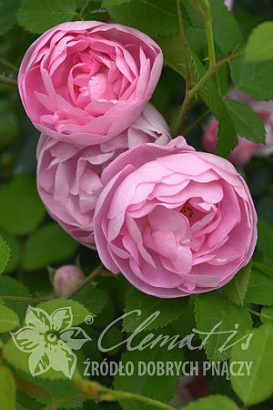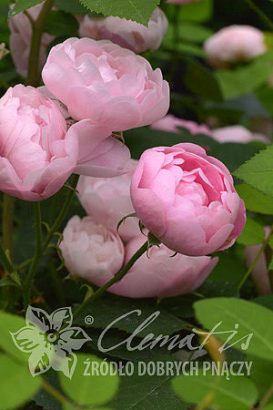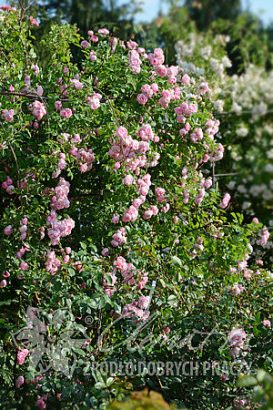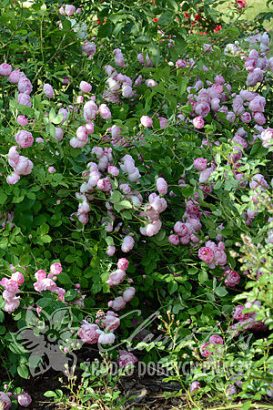Rosa ‘Raubritter’
Climbing rose 'Raubritter'| Decoration form | flowers |
|---|---|
| Color of flowers | pink |
| Plants height | 1-3 m |
| Flowering month | VI |
| Annual growth | --- |
| Aspect | sun, 3/4 sun, 1/2 sun |
| Frost hardiness | Zones 5 - 8 |
An interesting cultivars of spherical, light pink flowers. It may be grown as a climbing or groundcover rose. Tolerates poor soil and shaded sites.
WHAT IT LOOKS LIKE: Flowers 4-6 across, double, light pink of a nice rounded form, maintain both shape and colour throughout the season; pleasantly and strongly scented; flowers gathered in large panicles; generous flowering in VI does not re-occur; Leaves grey-green. Stems thick, caned, thorny.
HOW IT GROWS: A vine that leans against supports rather than climb along them. The cultivar belongs to the Ramblers group. Requires tying up. Strong-growing. The plant height depends on its support – in Poland it reaches 0.9-3 m. The supports should be sufficiently extensive and solid.
WHERE TO PLANT: Thrives in a sunny or semi-shaded site but will tolerate shade, too. The soil should be fertile and moist but well-drained. The preferred soil pH is slightly acidic or neutral. Hardy (zone 5–8).
HOW TO PLANT AND MAINTAIN: Before planting immerse the plant container in water for 10-30 min. Place the root ball in a 40 x 40 x 40 cm hole with a 10 cm layer of well-rotten manure or compost, 0.5-1 cm deeper than it was before. Fill the hole with fertile soil. Regular pruning is not necessary. The only measure that should be taken is removal of dead or damaged shoots in spring. Formative pruning may be performed also following the bloom, in VII.
HOW TO APPLY: The cultivar is recommended for house gardens, public greenery and parks, both in formal and natural areas. It may be trained in hedges, along walls, entrance gates or romantic arbours. Grown without supports, it may be a feature in a large rock garden.
ORIGIN: Germany. Raised by Wilhelm J.H. Kordes in 1936.










